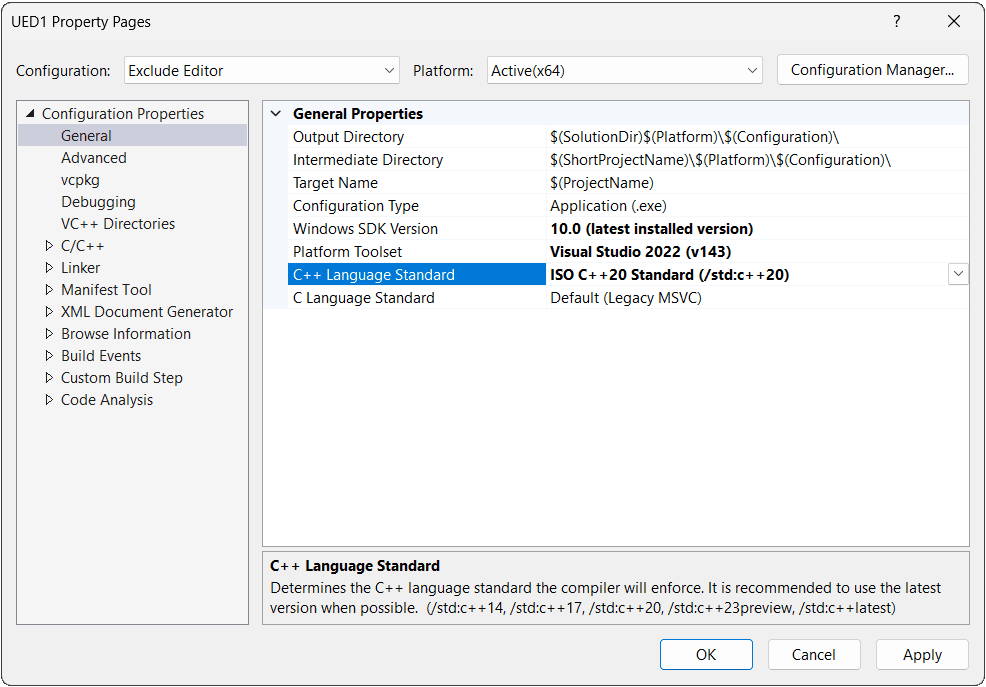Structured Binding
This lesson introduces Structured Binding, a handy tool for unpacking simple data structures
Imagine we have an object that contains a collection of other objects, such as an instance of our Vector3 struct from previous lessons:
struct Vector3 {
float x;
float y;
float z;
};
int main() {
Vector3 SomeVector{1.0, 2.0, 3.0};
};Often, we'll want to extract all of its members to standalone variables for further operations:
struct Vector3 {
float x;
float y;
float z;
};
int main() {
Vector3 SomeVector{1.0, 2.0, 3.0};
float a { SomeVector.x };
float b { SomeVector.y };
float c { SomeVector.z };
};C++ offers a convenient shortcut to this, called structured binding.
C++ Language Standards
The C++ language evolves over time with new features. These updates are currently made every 3 years, and are informally given names like C++17, C++20, and C++23.
The main implication for us is that we need to make sure the feature we want to use is available in the language standard we're using.
For example, structured binding was added in C++17 so, if we want to use this feature, we need to ensure our tools are using C++17 or later.
This is particularly important for Visual Studio users as, at the time of writing, Visual Studio uses C++14 by default. That is quite old now, so we should configure our project to something more recent.
You can do this by opening the Property Pages window (from the View menu on the top bar) and setting the C++ Language Standard within the General section. I'd recommend setting it to C++20 or later:

If you want to follow along with the examples in this course and compile them yourself, your C++ standard should be at least C++17. Occassionally, we will cover capabilities added in C++20 and later, but we'll call out that increased requirement when we do.
Using Structured Binding
Once we've confirmed we're using C++17 or later, we can use structured binding with the folllowing syntax:
#include <iostream>
using namespace std;
struct Vector3 {
float x;
float y;
float z;
};
int main(){
Vector3 SomeVector{1.0, 2.0, 3.0};
auto [a, b, c]{SomeVector};
cout << "a = " << a
<< ", b = " << b
<< ", c = " << c;
}a = 1, b = 2, c = 3To break this down, first, we use the auto keyword, which asks the compiler to automatically determine what type each of our new variables will have.
Note we must use auto here, even if all our variables will have the same type.
After auto, we open up a set of square brackets - [ and ]. Within these brackets, we specify the name we want to use for each variable we create.
Finally, we provide the object we want to use to initialize these variables. We can use any initialization syntax here - the following are all options:
auto [a, b, c]{SomeVector};
auto [d, e, f](SomeVector);
auto [g, h, i] = SomeVector;Test your Knowledge
Structured Binding
In the following program, how can we access the Name, Level, and Health values of MyCharacter using structured binding?
#include <iostream>
using namespace std;
class Character {
public:
string Name{"Goblin Warrior"};
int Level{5};
int Health{100};
};
int main(){
Character MyCharacter;
// Access MyCharacter variables
}Limitations of Structured Binding
Much like aggregate initialization, structured binding is mostly useful for simple data types, such as our Vector3 struct.
Once our type gets more complicated, structured binding has some limitations. Firstly, we need to unpack every variable from our object, even if we only need some of them.
An additional effect of this limitation is that, if our type has private data members, we can't access all of them, so we can't use structured binding at all.
In those cases, we need to fall back to traditional approaches, such as accessing variables one-by-one, or providing a member function to support the desired access pattern.
Summary
In this lesson, we explored the concept of structured binding in C++. Here are the key takeaways:
- Structured binding provides a concise and readable way to unpack members from simple types.
- The
autokeyword is essential in structured binding, allowing the compiler to infer the types of the unpacked variables. - With structured binding, we must unpack every public member.
- If the type has any private members, we can't use structured binding.
- With more advanced knowledge, we'll be able to overload structured binding for our custom types, giving us more flexibility
Inheritance
In this lesson, we explore C++ inheritance, guiding you through creating and managing class hierarchies to streamline your code